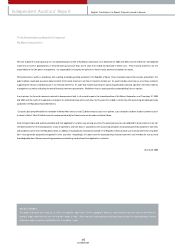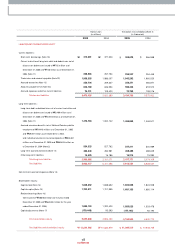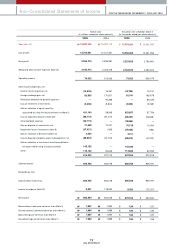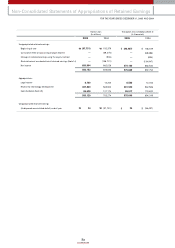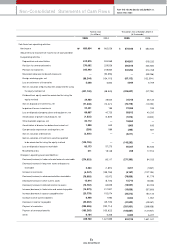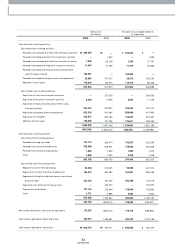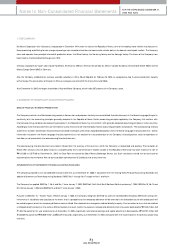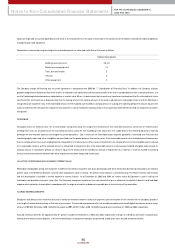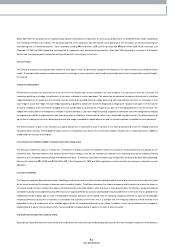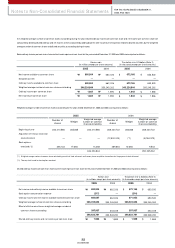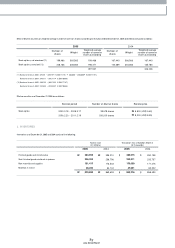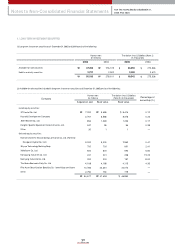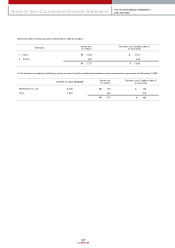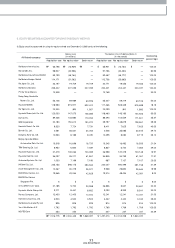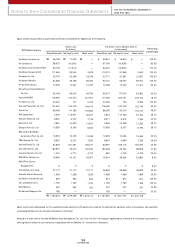Kia 2005 Annual Report Download - page 86
Download and view the complete annual report
Please find page 86 of the 2005 Kia annual report below. You can navigate through the pages in the report by either clicking on the pages listed below, or by using the keyword search tool below to find specific information within the annual report.
86
KIA MOTORS
repairs are expensed as incurred. Expenditures that result in the enhancem ent of the value or extension of the useful lives of the facilities involved are treated as additions
to property, plant and equipm ent.
Depreciation is com puted using the straight-line method based on the estim ated useful lives of the assets as follow s :
The Com pany charges all financing cost to current operations in accordance with SKAS No. 7 -”Capitalization of Financing Costs”. In addition, the Company assesses
possible recognition of impairment loss when there is an indication that expected future econom ic benefits of an asset is considerably less than its carrying amount, as a
result of technological obsolescence or rapid declines in market value. When it is determined that an asset may have been im paired and that its estim ated total future
cash flow s from continued use or disposal is less than its carrying am ount, the carrying amount of the asset is reduced to its recoverable amount and the difference is
recognized as an im pairm ent loss. If the recoverable am ount of the impaired asset exceeds its carrying am ount in subsequent reporting period, the amount equal to the
excess is treated as the reversal of the im pairm ent loss; however, it cannot exceed the carrying amount that w ould have been determ ined had no im pairment loss been
recognized.
INTANGIBLES
Intangible assets are stated at cost, net of am ortization com puted using the straight-line m ethod over the estimated econom ic useful lives of related assets.
Developm ent costs are am ortized over the estimated econom ic useful life (not exceeding three years) from the usable date of the related productions. Ordinary
developm ent and research expenses are charged to current operations. Cost in excess of net identifiable assets acquired (goodw ill) is am ortized over five years and
industrial property rights and other intangibles are am ortized over the period betw een five and ten years. If the recoverable am ount of an intangible asset becom es less
than its carrying amount as a result of obsolescence, sharp decline in market value or other causes of im pairment, the carrying amount of the intangible asset is reduced
to its recoverable am ount and the reduced amount is recognized as impairment loss. If the recoverable am ount of a previously im paired intangible asset exceeds its
carrying amount in subsequent periods, an am ount equal to the excess shall be recorded as reversal of impairm ent loss; how ever, it shall not exceed the carrying
amount that would have been determ ined had no im pairm ent loss been recognized in prior years.
VALUATION OF RECEIVABLES AND PAYABLES AT PRESENT VALUE
Receivables and payables arising from long-term installm ent transactions, long-term cash loans (borrow ings) and other sim ilar loan (borrow ing) transactions are stated at
present value, if the difference betw een nominal value and present value is material. The present value discount is amortized using the effective interest rate m ethod,
and the am ortization is included in interest expense or interest incom e. As of Decem ber 31, 2005 and 2004, an interest rate of 8.25 percent is used in valuing the
receivables and payables at present value. Also, the Com pany recognizes im pairm ent loss and records the loss as allow ance for doubtful accounts and bad debt
expense when collection of receivables in accordance with the original schedule has becom e im possible due to restructuring of the receivables.
ACCRUED SEVERANCE BENEFITS
Em ployees and directors with m ore than one year of service are entitled to receive a lum p-sum paym ent upon term ination of their service with the Com pany, based on
their length of service and rate of pay at the tim e of term ination. The accrued severance benefits that would be payable assum ing all eligible employees were to resign
amount to ₩1,522,784 million (US$1,503,242 thousand) and ₩1,437,077 million (US$1,418,635 thousand) as of Decem ber 31, 2005 and 2004, respectively.
Accrued severance benefits are approxim ately 61 percent funded at Decem ber 31, 2005 and 2004, respectively, through an individual severance insurance plan.
Individual severance insurance deposits, in which the beneficiary is a respective employee, are presented as deduction from accrued severance benefits.
Buildings and structures
Machinery and equipm ent
Tools, dies and m olds
Vehicles
Office equipment
20~40
15
5
5
5
Useful lives (years)
Notes to Non-Consolidated Financial Statements FOR THE YEARS ENDED DECEMBER 31,
2005 AND 2004


